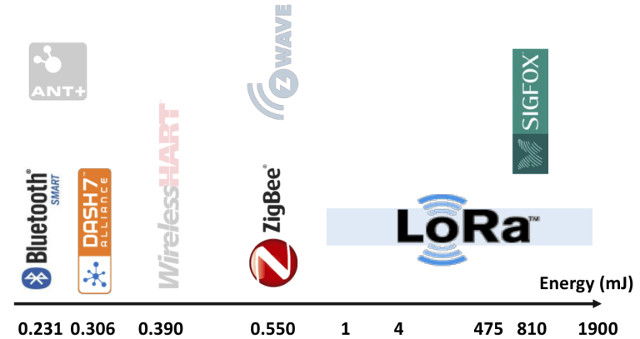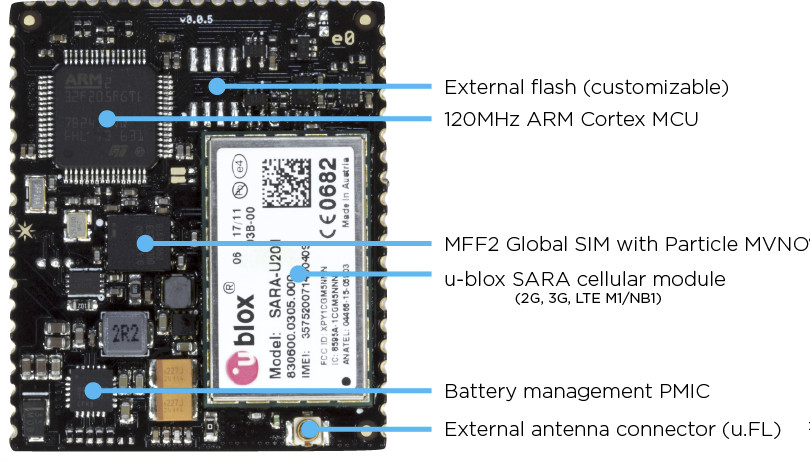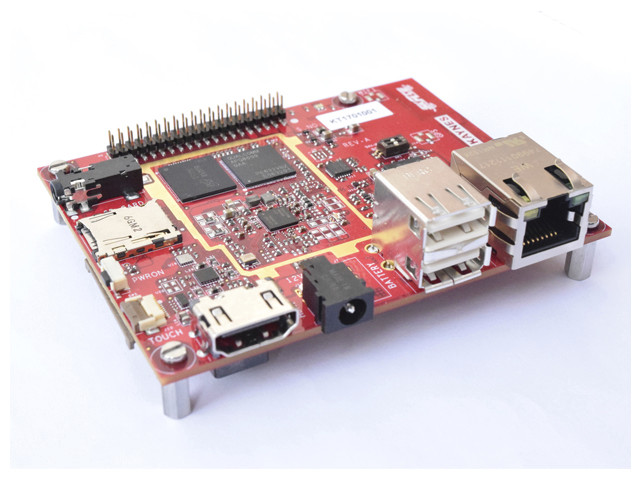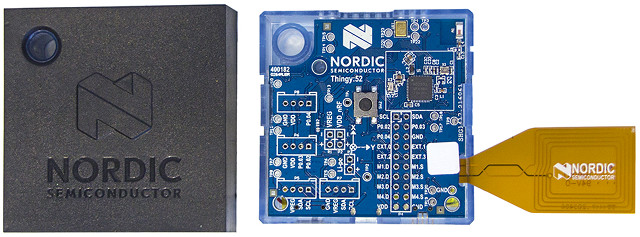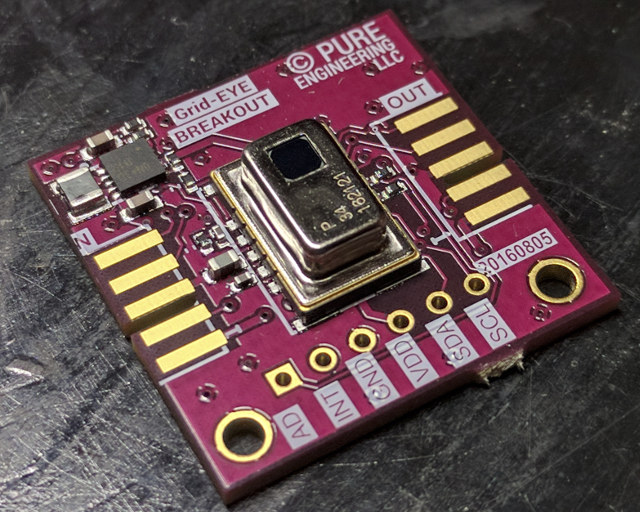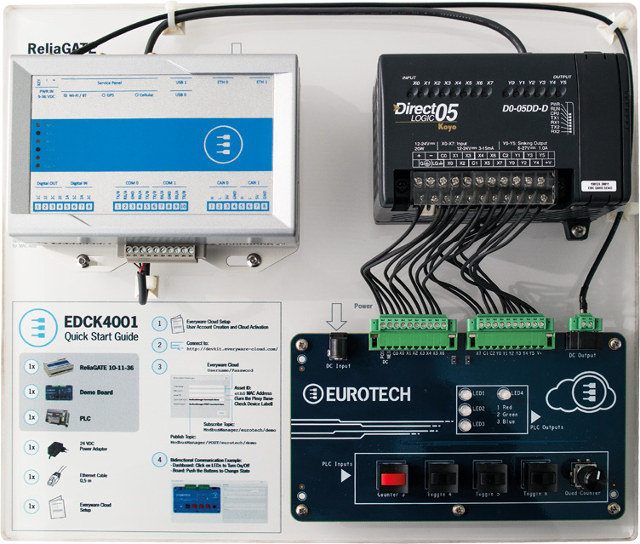Over the last few years, I’ve written several article about LoRaWAN, Cellular IoT, and Sigfox based long range low power IoT solutions. DASH7 is another LPWAN (Low Power Wide Area Network) standard that operates on the same 868 and 915 MHz ISM bands as LoRa and Sigfox, but has much lower power consumption, and the cost of a shorter range up to 500 meters, instead of the 5+km associated with LoRa or SigFox. The DASH7 Alliance Protocol (D7A) is an Open Standard, and if you want more details you can download version 1.1 of the specifications on DASH7 Alliance website. I’m writing about DASH7 today thanks to an article on ST blog about Wizzilab’s Wizzikit, an evaluation kit and framework for DASH7 with a gateway, and several nodes that can also optionally support LoRaWAN and Sigfox protocols. The kit is comprised of the following items: WizziGate GW2120 Ethernet/Wifi/Dash7 gateway – based […]
Particle E Series is a Family of 2G, 3G, 4G LTE Cellular IoT Modules Optimized for Mass Production
Cellular IoT has really taken off this year from the low cost Orange Pi 2G IoT board to 4G GPS Trackers, and global IoT SIM cards. Particle has been in this market for a couple of years, starting with their Electron boards, and the company has just announced the new Particle E series family of industrialized 2G, 3G, and LTE-enabled modules and a development kit. Key features of Particles E series modules: Cellular Connectivity u-blox SARA modules for cellular connectivity LTE: SARA-R410M 3G: SARA-U201/U260/U270 2G: SARA-G350 (2G) Embedded SIM card, Particle MVNO support in 100+ countries u.FL antenna connector MCU – STM32F205RGT6 120MHz ARM Cortex M3 microcontroller with 1MB flash, 128KB RAM Storage – • Expandable flash memory I/Os – 63-pin surface mountable castellated module with up 30x GPIOs, 12x ADC, 2x DAC, 13x PWM, 3x UART, 2x SPI, 1x I2S, 2x CAN, 1x USB 2.0 (Some signals are multiplexed) […]
SKATE-212 Snapdragon 212 Development Kit with 7″ Display is now available for $349
Last month, I wrote about two boards based on Snapdragon 212 processor that can be used for smart speakers, IoT applications, industrial automation, etc..: Intrinsyc Open-Q 212 SBC selling for $595 without LCD, and Kaynes Technology SKATE-212. We did not have that much information about the latter at the time, but the company has now published some photos, more details, and revealed pricing. SKATE-212 single board computer specifications: SoC – Qualcomm Snapdragon 212 quad core Cortex A7 @up to 1.3GHz with Adreno 304 GPU supporting OpenGL ES 3.0, OpenCL, DirectX System Memory – 1 GB LPDDR3 (Expandable upto 2GB) Storage – 8 GB eMMC flash (Expandable up to 16GB) + micro SD slot Video Output / Display – 7″ capacitive touchscreen, full size HDMI port (Only one or the other can be used at a given time) Connectivity – 10/100M Ethernet, 802.11 b/g/n WiFi + Bluetooth 4.x LE, GPS with […]
Intrinsyc Open-Q 835 Development Kit Features Qualcomm Snapdragon 835 Processor, Support Android 7 and Windows 10
Intrinsyc has just launched one of the first development boards powered by Qualcomm Snapdragon 835 processor with their Open-Q 835 devkit equipped with 4GB LPDDR4x, 128GB UFS 2.1 flash, 802.11ad WiFi, dual camera support and more. Open-Q 835 development kit is comprised of a “processor board” and a baseboard with the following specifications: Processor Board SoC – Qualcomm Snapdragon 835 (APQ8098) octa-core processor with four high performance Kryo 280 cores @ 2.20 GHz/ 2.30 GHz (single core operation), four low power Kryo cores @ 1.9 GHz, Adreno 540 GPUwith OpenGL ES 3.2, OpenCL 2.0 Full support, and Hexagon 682 DSP with Hexagon Vector eXtensions (dual-HVX512) System Memory – 4GB LPDDR4x RAM Storage – 128GB UFS2.1 Gear3 2 lane Flash Connectivity Wi-Fi 802.11a/b/g/n/ac 2.4/5Ghz 2×2 Bluetooth 5.0 + BLE WiGig60 802.11ad with on-board antenna Dimensions – 70 x 60 mm Carrier Board Display – 1x HDMI 2.0 out up to 4K Ultra […]
Nordic Thingy:52 Bluetooth 5 IoT Sensor Development Kit Targets Mobile & Web App Developers
Some developers may be interested in providing solutions for the Internet of Things, but they may not have the skills or interest in making their own hardware, and/or develop firmware, and just want to create demos or prototypes quickly, focusing on app development instead. Nordic Semiconductors has recently launched Thingy:52 IoT Sensor Kit with Bluetooth 5 & NFC connectivity, and various sensors for those developers. Nordic:52 IoT Sensor development kit (nRF6936) hardware specifications: MCU – Nordic Semi nRF52832 ARM Cortex-M4F Bluetooth 5 System on Chip (SoC) Connectivity – Bluetooth 5 LE and NFC Sensors Temperature,Humidity, Air pressure, Air quality (CO2 and TVOC), color and light intensity 9-axis motion sensing – Tap detection, orientation, step counter, quaternions, euler angles, rotation matrix, gravity vector, compass heading, raw accelerometer, gyroscope, and compass data Audio Speaker for playing prestored samples, tones, or sound streamed over BLE (8-bit 8 kHz LoFi) Microphone streaming (ADPCM compressed […]
MYiR Tech MYC-JA5D2X System-on-Module is Powered by Microchip ATSAMA5D2 Cortex A5 Processor
MYIR Tech has released MYC-JA5D2X system-on-module powered by a Microchip Atmel SAMA5D2 ARM Cortex A5 processor with 256MB flash, and 256 MB DDR3. The module relies on a SO-DIMM edge connector to expose the camera interface, Ethernet, USB, camera, and other I/O signals. MYC-JA5D2X CPU module specifications: SoC – Atmel SAMA5D26 or SAMA5D27 ARM Cortex A5 processor @ up to 500 MHz with 128KB L2 cache System Memory – 256MB DDR3 SDRAM Storage – 256MB NAND flash, 4MB data flash, 64KB EEPROM Connectivity – On-board 10/100M Ethernet PHY 200-pin SO-DIMM edge connector with: 1x Ethernet 1x USB Host, 1x USB Device, 1x USB HSIC (HSIC is only for SAMA5D27) Up to 10x serial ports, up to 2 x CAN (only for SAMA5D27) Up to 7 x I2C, up to 7 x SPI Up to 2 x QSPI 12 x 12-bit ADC (enhanced resolution up to 14 bits) 4x PWM 1x […]
Grid-EYE Breakout Board is a $49 Low Resolution Thermal Camera Module
Thermal cameras can be really expensive pieces of equipment, and even the cheap 60×60 thermal cameras available on Aliexpress costs a little over $200. However, PURE Engineering has made an breakout board with Panasonic Grid-EYE infrared 8×8 array sensor that allows you to experiment with the technology, or integrate into your own projects for just $49. Grid-EYE breakout board features: Panasonic Grid-EYE AMG8834 64 pixel infrared / thermal camera sensor with 60 degree viewing angle using MEMS thermopile technology Pinout compatible with Arduino Zero, ST-NUCLEO board, and other 3.3V boards with I2C, VDD, GND, INT, and AD pins PUREModules PCB edge connectors with UART, GPIO, to interface with the company’s IoT board Power Supply – On-board regulator handles 3 to 5V input The Panasonic sensor transfers thermal presence, direction, and temperature values over I2C. The company wrote a demo for the module with an Arduino sketech and a Processing sketch […]
Eurotech EDCK 4001 Everyware Device Cloud Development Kit Includes IoT Gateway, PLC and Demo Board
Eurotech has recently EDCK 4001 “Everyware Device Cloud Development Kit” for professionals who wish to experiment with and/or develop IoT/M2M applications. It includes the company’s ReliaGATE 10-11 IoT gateway powered by Texas Instruments Sitara AM3352 Cortex A8 processor, DirectLOGIC DL05 PLC, and a control/demo board with buttons, LEDs, and rotary encoder, as well as all necessary cables and accessories. ReliaGATE 10-11 gateway specifications: SoC – Texas Instruments AM3352 ARM Cortex A8 processor @ 800MHz Memory – 512MB DDR3 Storage – 4GB eMMC flash, user accessible micro SD Slot Connectivity – 2x 10/100Mbps, WiFi and Bluetooth, optional Cellular connectivity and GPS via ReliaCELL USB – 3x USB 2.0 host ports; noise and surge protected Serial – 2x RS-232/RS-485 (Surge protected, RS-485 termination and Fail-safe Resistors); 1x Serial Console TTL CAN – 2x CAN 2.0b bus with 5V/100mA power out Digital I/O – 2x Digital Input 5V (TTL), 1KV opto-isolated – 2x […]


